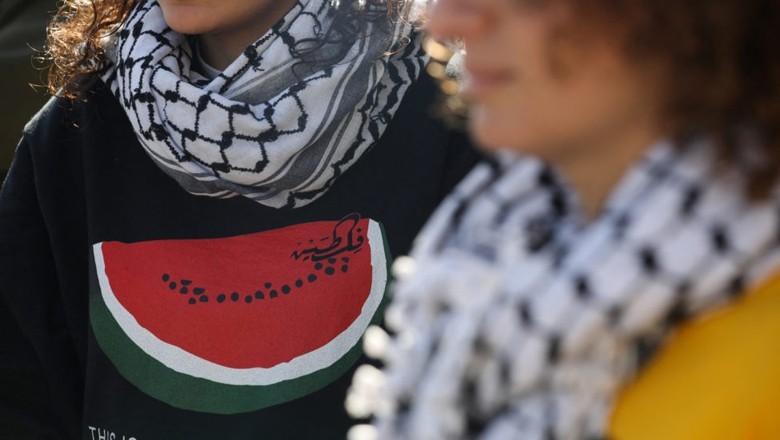How watermelon became a symbol of solidarity with Palestinians globally?

Web Desk
|
18 Jan 2024
In the past three months, a unique symbol ‘watermelon’ has gained prominence in global protests against Israel's war on Gaza.
This imagery, displayed on banners, T-shirts, balloons, and social media, features the colors of a sliced watermelon, resembling the Palestinian flag with its red pulp, green-white rind, and black seeds.
This fruit has become a universal symbol of solidarity, bringing together activists worldwide who share a common cause despite differences in language and culture.
The watermelon's association with protests has historical roots. After the 1967 Middle East war, the Israeli government prohibited displays of the Palestinian flag in Gaza and the West Bank.
In 1980, an Israeli officer warned artists against using the colors of the Palestinian flag, including those resembling a watermelon. In response, people started waving watermelons in public as a form of protest.
Over the years, the Palestinian flag's display diminished but regained significance with the nationalist Israeli government taking office a year ago.
Efforts to ban Palestinian flags in public places sparked opposition, leading to creative responses like using watermelon imagery as a substitute.
For some activists, embracing the flag's colors symbolizes a quest for freedom and equality rather than a strict pursuit of statehood.
The watermelon emoji has become a recent addition to the visual language of political dissent, particularly in online advocacy for a ceasefire in Gaza.
This symbolic use of watermelons is part of a broader trend where various symbols, including keys, spoons, olives, doves, poppies, and keffiyeh scarves, signify global solidarity with Palestinians.
In the face of censorship concerns on social media platforms, activists use symbols like watermelons to convey their message effectively.
The watermelon's symbolism resonates due to its seeds, embodying resilience and the idea that, like seeds, suppressed voices can endure and thrive.
The image of a watermelon with bold, triangular seeds has become a powerful visual element in protests, both offline and online, emphasizing the interconnected struggles for liberation and justice.












Comments
0 comment